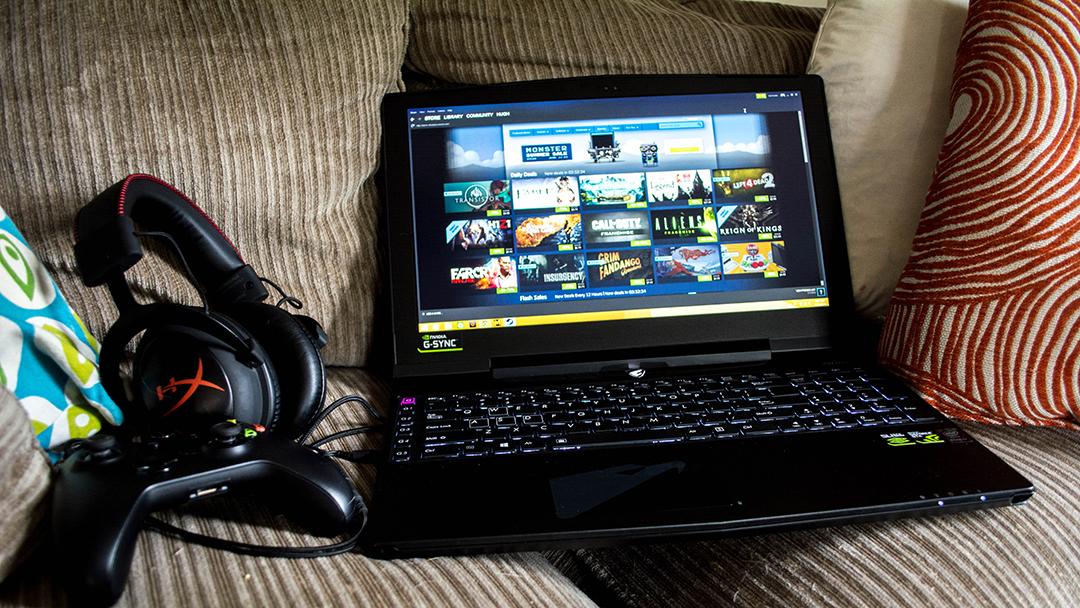Why you can trust TechRadar
This is by no means the lightest computer out there, but for what's inside, the Aorus X5S v5 is lighter than you might think. I was surprised when I first pulled it out of the box.
At 2.5kg, or 5.5 pounds, it's a full pound heavier than the Razer Blade 2015, but still feels lighter than it should. It's impressive given all the hardware tucked inside. And 15-inch rig is just under an inch thick when closed, coming it at 0.9 inches, or 22.9mm.
The Acer Predator 15 is 45% heavier, at 7.5 pounds (3.4kg), while the Gigabyte P35X v5 comes in just a tiny bit lighter at 5.29 pounds. I never feel that the weight is an issue when carrying the Aorus X5S v5 from seat to desk, or vice versa. But the fairly bulky power brick adds significant strain on my shoulder when transporting the unit via laptop bag.
At 390 x 272 x 22.9mm, or 15.35 x 10.72 x 0.9 inches, the 15-inch Aorus is just a bit larger than the P35X, but significantly smaller than the tank-like Acer Predator, which has similar depth and width, but is a full 1.5 inches thick.
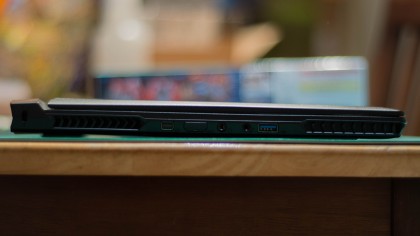
Spec sheet
The specs on the updated Aorus X5S v5 provided for testing are as follows:
- CPU: 2.7GHz Intel Core i7-6700HQ (quad-core, 6MB cache, up to 3.5GHz with Turbo Boost)
- Graphics: Nvidia GeForce GTX 980M (8GB GDDR5 VRAM)
- Memory: 16GB DDR4 (2,133 MHz)
- Screen: 15.6-inch, 3,840 x 2,160 IPS wide angle view display
- Storage: 265GB SSD (M.2), 1TB HDD (7,200 rpm)
- Connectivity: Killer LAN, Intel AC 7265 802.11ac Wireless
- Camera: HD Webcam
- Weight: 5.51 pound, 2.5kg
- Size: 15.35 x 10.72 x 0.9 inches, 390 x 272 x 22.9 mm (W x D x H)
As tested, the X5S v5 costs $2,299 (about ₤1,610, AU$3,068). There are three slots for SSDs up to 512GB each, meaning you have the option of maxing out your flash storage at over 1.5TB – and that's in addition to the 1TB HDD.
The option to expand flash storage to such huge capacities is great news for anyone who wants to store their programs and applications on an SSD. Programs like Adobe Photoshop and Lightroom get a huge performance boost when booting from a solid state drive. Games also see shorter loading times running on an flash storage, and with 60GB-plus being the standard size for modern triple-A games, all that potential wiggle room future-proofs the X5S v5.
When it comes to resolution, the X5S v5 and the P35X are in a dead-heat, with both beating out the Predator's standard 1920 x 1080. If you have the bandwidth, I highly recommend checking out YouTube's 4K offerings. You've never seen such compelling blades of grass in your life. The super bright colors on the X5S v5, coupled with the crispness of UHD, make b-roll footage something you'll actively watch.
I find myself watching, and then rewatching, wildlife videos on YouTube, simply because they looked so amazing. The screen is also bright enough that I was able to use it in direct sunlight, and there's a light sensor above the screen that automatically adjusts brightness based on the ambient lighting.
The X5S v5 can also hook up to an external monitor for full 4K output through its HDMI 2.0 port.
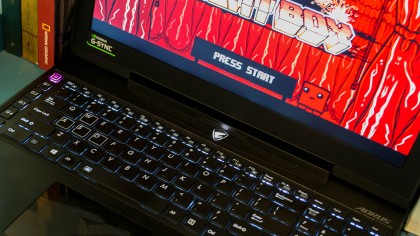
Performance
The Aorus X5S v5 doesn't just borrow its styling cues from modern super cars. When it comes to performance, half the fun is pushing the machine to its limits. I had zero issue editing photos in Lightroom or watching UHD content on YouTube.
When it came to gaming, I found myself gleefully exploring Grand Theft Auto V again in spite of the fact I've played the game on Xbox 360, PlayStation 4, and my own personal PC. At GeForce Experience's optimized settings, it looks absolutely gorgeous.
With 8GB of VRAM on hand, there's plenty of room to turn up the settings, and just for fun I put everything on its maximum. At 4K, Grand Theft Auto V is jaw-droppingly gorgeous. However, as detailed as everything is, frame rate dropped to around 8 fps. It was laughable how badly it ran, but hey, it still looked fantastic.
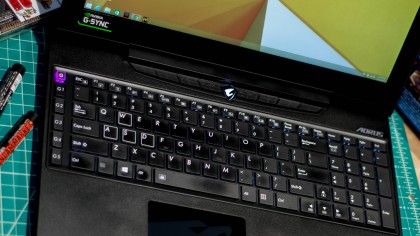
I also took the opportunity to play Street Fighter V, in Ultra HD with all the settings maxed out. Street Fighter V runs beautifully, with a fast, smooth frame rate and bright, lovely color rendering on the X5S v5's screen.
Plugging in my fight stick brought to my attention one minor annoyance, however: the left side of the computer has no standard USB connections. You can either plug into the solitary connection on the back, or one of the two on the right.
All that horsepower comes with more than just a monetary price, however. Fan noise is definitely a problem. The computer has to work hard to pull all that heat away from the processors, and once the graphical intensity ramps up, so does the fan noise.
There are different, pre-programmed fan modes in the Command & Control software bundled in with the computer, but turning the fans to "quiet" produces a noticeable hit to performance, thanks to thermal throttling.
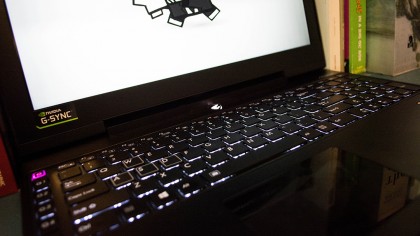
Benchmarks
Here's how the Aorus X5S v5 handled our benchmarks:
- 3DMark: Cloud Gate: 18,801; Sky Diver: 20,676; Fire Strike: 8,172
- Cinebench CPU: 676 points; Graphics: 97 fps
- GeekBench: 3805 (single-core); 13472 (multi-core)
- PCMark 8 (Home Test): 2,858 points
- PCMark 8 Battery Life: 2 hours and 23 minutes
- Middle Earth: SoM (1080p, Ultra): 66 fps; (1080p, Low): 117 fps
- Grand Theft Auto V (1080p, Ultra): 28 fps; (1080p, Low): 133 fps
The X5S v5 is neck and neck with the Gigabyte P35X v5, but falls way short of the beastly Acer Predator 15. The previous Aorus X5 had a pair of GeForce 965M cards, while the updated version has a single 980M, the same chip inside the P35X and the Predator, but with twice as much VRAM as Acer's laptop.
All 3 computers have the same processor and the same GPU, but it seems the real bottleneck is RAM. I couldn't have imagined we'd live in a time where 16GB of RAM was on the low-end of things, but the 100 to 300 point lead the Predator has in multiple benchmark tests with its 32GB of RAM is pretty hard to ignore.
Even with 8GB of video RAM on tap, the Aorus fails to reach the numbers put on the boards by the Predator 15. The X5S v5 has 4 slots, expandable to 64GB, so there's room for plenty more memory.
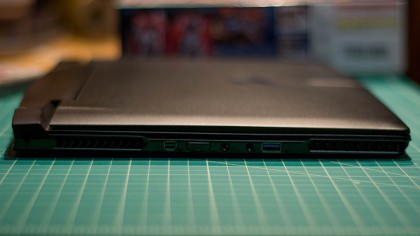
Sure, it's "portable"
Battery life for the Aorus X5S v5 is marginally better, but it still borders on the unacceptable. The PCMark 8 battery test results came in at 2 hours and 23 minutes – seven minutes longer than its predecessor. In our battery test, running Guardians of the Galaxy on a continuous loop in VLC at 50% screen brightness, I was able to eke out just over 3 hours 45 minutes. Decent enough if you plan on watching movies, but not much else.
You'll get better battery life out of the Gigabyte P35X (3 hours and 31 minutes) and the massive Predator 15 (3 hours and 17 minutes), both of which outlasted the Aorus X5S v5 in the PCMark 8 test.
While battery life is slightly improved in the updated version, it still fails to break 3 hours in the PCMark test. The need to be close to an outlet at all times severely limits the portability of the X5S v5, and isn't portability the entire point of having a laptop in the first place?
